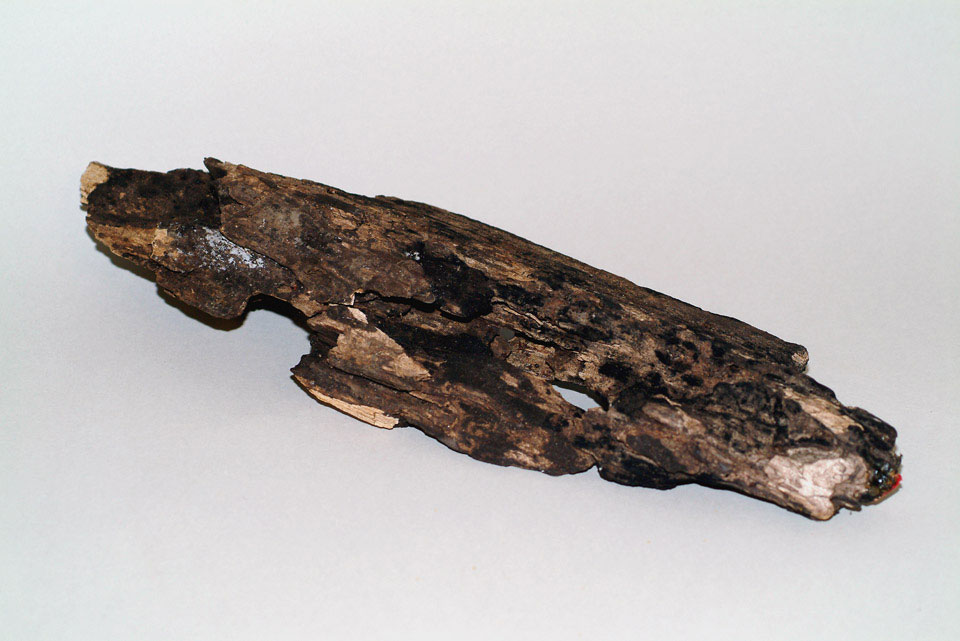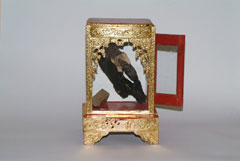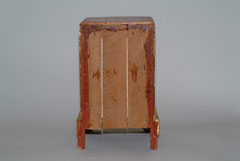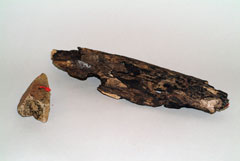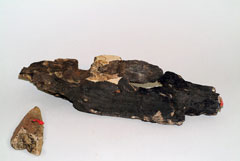
Online Collection
Section of a sleeper from the 'Death Railway', Burma, 1945 (c)
Between October 1942 and December 1943, the Japanese Army used forced labour to build a railway that cut 260 miles (420km) through mountainous jungle to link Burma (now Myanmar) and Siam (now Thailand). The project was designed to safeguard the passage of supplies from Singapore and Bangkok to the Japanese armies fighting in Burma. The previously used sea route had become too risky.
Building the railway led to the deaths of around 15,000 Allied prisoners of war and over 80,000 Asian civilians from over-work, disease and starvation.
The Japanese used the railway until April 1945, when parts of the line and the famous bridge over the River Kwai (Khwae Yai) were destroyed in Allied air raids. The prisoners were liberated when Japan surrendered on 2 September 1945 following the atomic bomb raids on Hiroshima and Nagasaki.
This 14-inch (35.5cm) long section of wood is from one of the railway sleepers at Thanbyuzayat at the Burmese end of the line. It is housed in a red and gold wood box and was used as a miniature Buddhist shrine - a fitting act of remembrance for the railway's thousands of victims.
NAM Accession Number
NAM. 2005-04-15-1
Copyright/Ownership
National Army Museum Copyright
Location
National Army Museum, Study Collection
Object URL
https://collection.nam.ac.uk/detail.php?acc=2005-04-15-1

